.
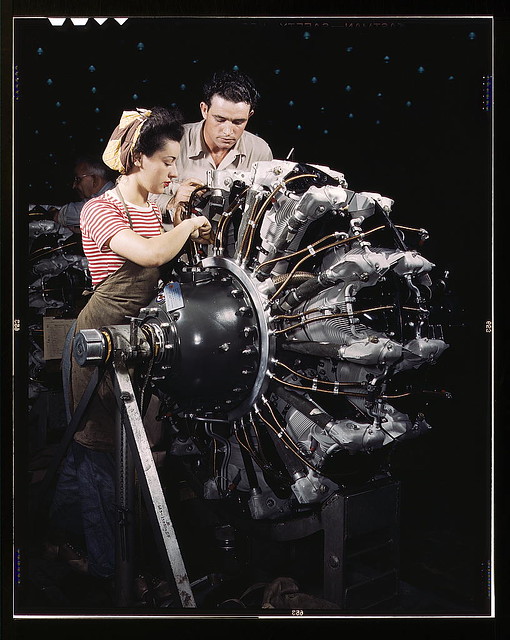
Women are trained as engine mechanics in thorough Douglas training methods, Douglas Aircraft Company, Long Beach, California: photo by Alfred T. Palmer, October 1942
A poetic tremor is expected of every example of emphatic objectivity... The tremor lives off the excess power which technology as a whole, along with the capital that stands behind it, exercises over every individual thing. This is what transcendence is in mass culture. The poetic mystery of the product, in which it is more than itself, consists in the fact that it participates in the infinite mystery of production and the reverential awe inspired by objectivity fits in well with the schema of advertising... Reality becomes its own ideology through the spell cast by its faithful duplication. This is how the technological veil and the myth of the positive is woven.

Men and women make efficient operating teams on riveting and other jobs at the Douglas Aircraft plant, Long Beach, Calif. Most important of the many types of aircraft made at this plant are the B-17F ("Flying Fortress") heavy bomber, the A-20 ("Havoc") assault bomber and the C-47 heavy transport plane for the carrying of troops and cargo: photo by Alfred T. Palmer, October 1942
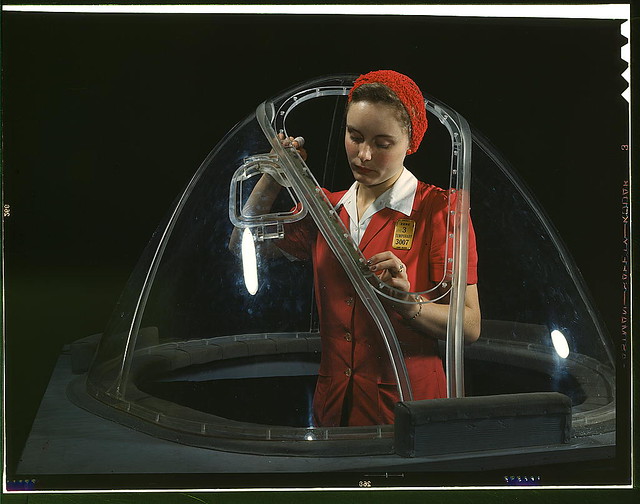
This girl in a glass house is putting finishing touches on the bombardier nose section of a B-17F navy bomber, Long Beach, California. She's one of many capable women workers in the Douglas Aircraft Company plant. Better known as the "Flying Fortress," the B-17F is a later model of the B-17 which distinguished itself in action in the South Pacific, over Germany and elsewhere. It is a long range, high altitude heavy bomber, with a crew of seven to nine men, and with armament sufficient to defend itself on daylight missions: photo by Alfred T. Palmer, October 1942
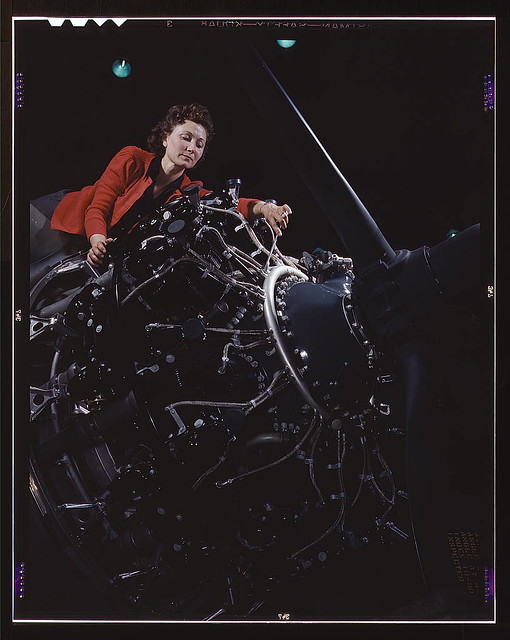
Woman at work on motor, Douglas Aircraft Company, Long Beach, California: photo by Alfred T. Palmer, October 1942
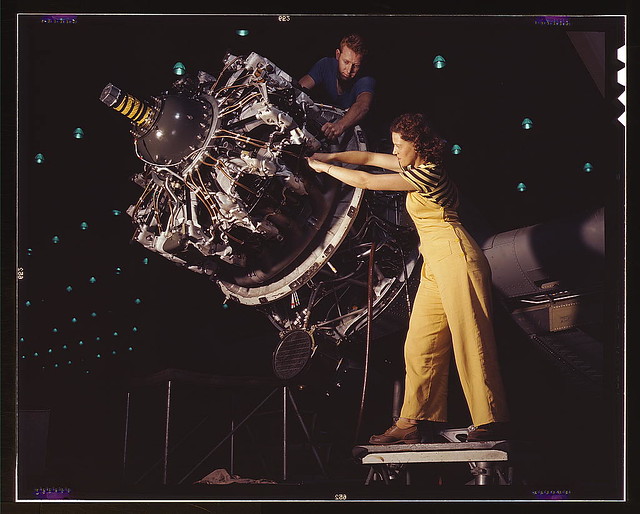
Women are trained to do precise and vital engine installation detail in Douglas Aircraft Company plants, Long Beach, California: photo by Alfred T. Palmer, October 1942
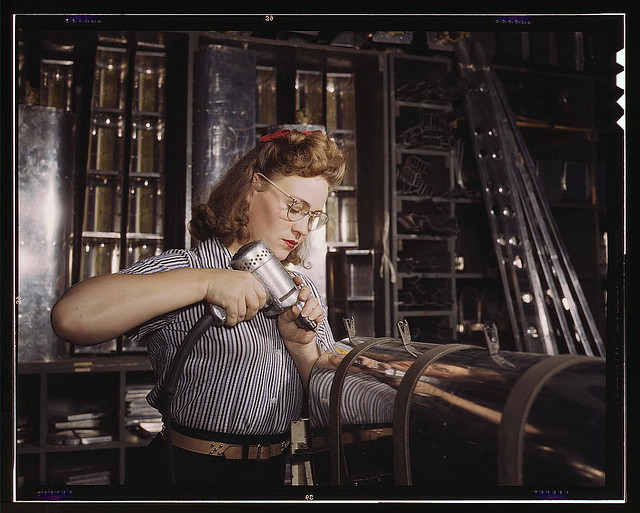
Operating a hand drill at North American Aviation, Inc., a woman is working in the control surface department assembling a section of the leading edge for the horizontal stabilizer of a plane, Inglewood, California: photo by Alfred T. Palmer, October 1942
Theodor Adorno: The Schema of Mass Culture (translated by Nicholas Walker),1978, edited excerpt, from The Culture Industry, 1991
Photos by Alfred T. Palmer from Farm Security Administration/Office of War Information Collection, Library of Congress
By the by, Alfred T. Palmer wasn't the only OWI photographer doing these enticing industrial pin-ups. (By 1942-1943 both the war industry and the propaganda industry, a division of the culture industry, had plainly got into high gear.)
ReplyDeletesooo
ReplyDeletenow that we are all-so (computer-tech.) liiterate
the consumer is now (instantaneously) the produceher?
thank Apple that I got this automatic spell-check featue... now to see how to build an huge shiny 1942 aireoplane engine so's I can fly my virtual B-47 Bomber over ... and if the bomb doesn't get "them"
I'll beat 'em with my Medicare cane!
And if that doesn't work, they just take away your job and ignore your phone calls and letters. The Adorno passage is still highly applicable, I think, but it finally makes me feel that I'm currently living in a "post-modern" period. It's a term I've had a lot of trouble with for a long time.
ReplyDeleteCurtis,
ReplyDeleteWell, you know Adorno was in the US long enough to form some strong (negative) reactions. What he calls "mass culture" is something that seems to invoke in him a deep and secret shudder of distrust, even revulsion.
His pessimistic vision of American culture is consistent with his view of the condition of modern persons in industrialised societies. He dwells I think on a stark common ground with Beckett, to whose work he was strongly drawn. A private compact with failure seems the point from which each of the two begins. That's at least a sort of embarkation I can perhaps dimly understand. I find his pessimism oddly cheering. Of course he died in bad odor with the political Left, and his grave was pissed upon. There again, common ground.
At any rate, his work, his commitment to a certain notion of truth in verbal and formal matters, putting things to a test of verity sentence-by-sentence in the method he called "negative dialectic", seems to me to run counter to that disdain for truth upon which postmodernism rests its rather nonchalant and weak case.
Ed,
ReplyDeleteTap, tap...
As you will observe in the fine print at the bottom, I have blamed this one on you.
Curtis,
ReplyDeleteAnd then again, on the other hand, about that funny feeling... I think I know what you mean.
TC: I can handle being blamed ....it comes with my being
ReplyDeleteDesifinado
so to push on (speaking of 'language'): in Talk Four of OUT OF THE PICTURE the interviewer asks Milton (Resnick) this:
"Some people think there is no such thing as a pure accident. Like me. And I often believe that anarchy has order. Otherwise you couldn't call it anarchy.
and Milton replies:
" Well, it's good enough. You've got a good head on you. You can make mishmash out of almost anything. All I'm doing is being friendly. You're on me every time I open my mouth."
as for steel? plastic has replaced (most) steel...